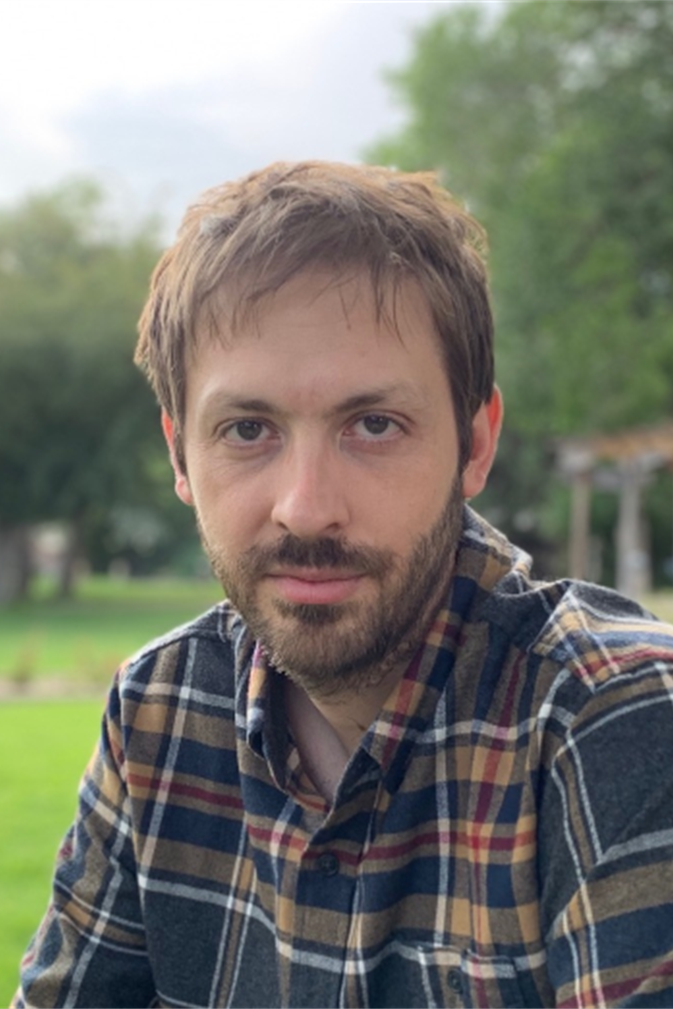Data
You will be redirected to cenamweb.org in 15 second(s). The JINA-CEE website is not updated anymore. The archived website can still be reached through the CeNAM website.
JINA-CEE Faces: Interview with Panos Gastis

Panos Gastis is an experimental nuclear physicist who studies nuclear reactions that play key roles in various astrophysical processes. He is originally from Greece, and received his bachelors degree from the National Technical University of Athens at the School of Applied Mathematics and Physical Sciences. He graduated with his PhD from Central Michigan University in 2020, where he collaborated with Georgios Perdikakis, and he is currently working as a postdoctoral researcher at Los Alamos National Laboratory.
When did you decide to pursue a career in science?
-From an early age I always wanted to know how things worked, from electronic devices to the human body and the sun, and I also loved solving problems. When I was an undergrad I performed research at the Demokritos Laboratory in Athens, Greece, where I got involved in nuclear physics for the first time. I had the chance to work with the tandem accelerator there, which is a twin of the one at the Edwards Laboratory, located in Athens, Ohio. Quite a nice coincidence that as a grad student I got to work with the latter too!
How do you interact with JINA-CEE?
-Throughout grad school I collaborated mostly with JINA researchers, and to date I continue to work with several of them. I have also participated in various JINA summer schools and workshops. More recently I served as chair of the organizing committee of the IReNA online seminar, which gave me the opportunity to interact not only with the JINA community but also with colleagues from other networks.
What is the focus of your research?
-I am interested in the study of nuclear reactions associated with astrophysical phenomena, mainly stellar nucleosynthesis and supernovae. Recently, I started to focus also on the study of nuclear fission that plays a role in r-process nucleosynthesis. At LANL, I am part of the Nuclear and Particle Physics and Applications group, and I am working on fission experiments relevant to nuclear applications. These experiments could provide useful information for astrophysics as well.
What’s your favorite part of your job?
-That what I do is like an art to me, it is not just something that I do and I leave behind after 5pm. It is a constant challenge where I have to come up with creative solutions every day. I have passion for what I do and that keeps things interesting. Science is not something you just end up doing by chance, you have to be intentional.
What do you consider has been your most important scientific finding so far?
-An experiment we did to characterize an instrument, initially, but that evolved into a contribution to the study of the feasibility of exoplanets to harbor life. It turns out that some key radionuclides, such as 40K, are responsible for planetary radiogenic heating. By measuring the destruction rate of 40K via the 40K(n,p)40Ar reaction, we provided valuable input data for calculation of stellar yields for 40K, which we hope will in turn help to improve the accuracy of the radiogenic heating models currently used to identify exoplanets that could support life. This is a very complicated problem but we added a small piece of nuclear physics information that may be useful in a new research field.
What’s your advice for junior researchers?
-When you are trying to solve a complicated problem, answers are often not straightforward, and you might think there’s no point in trying harder. This is normal. Scientists have to deal with frustration and failure pretty often. If you’re ever there, remember why you started in the first place, remember when you were little and had a curious mind. Keep in mind what inspires you to do science.
What do you do on your free time?
-I enjoy playing the guitar, and more recently swimming and hiking.
